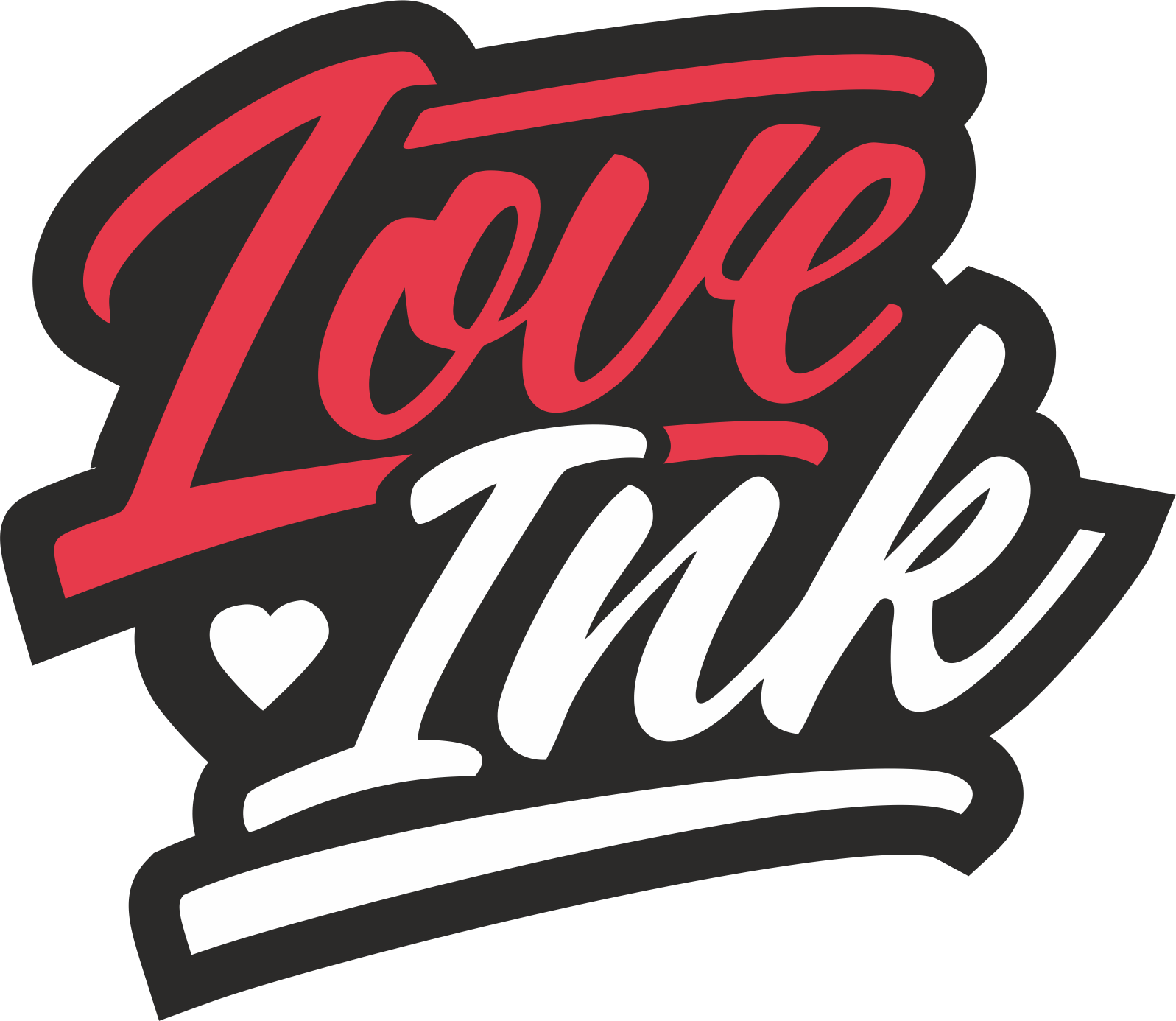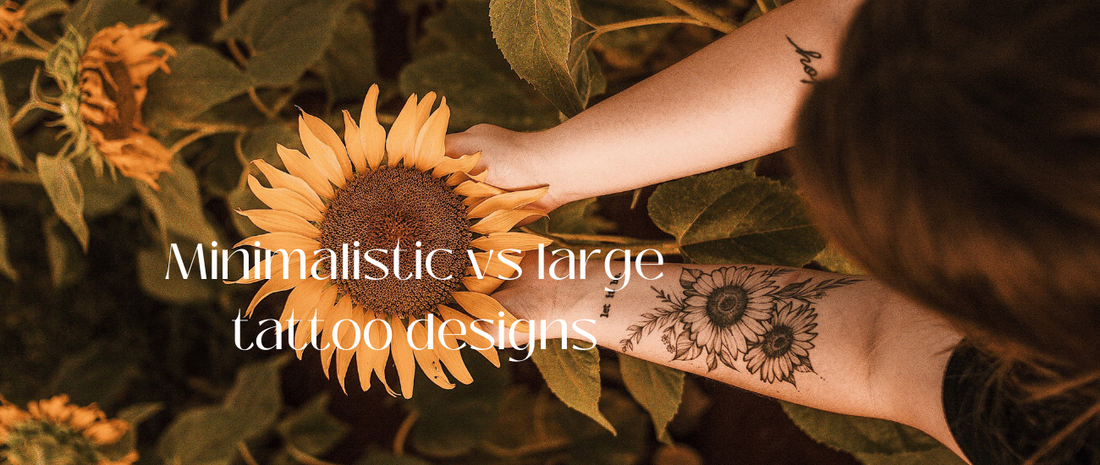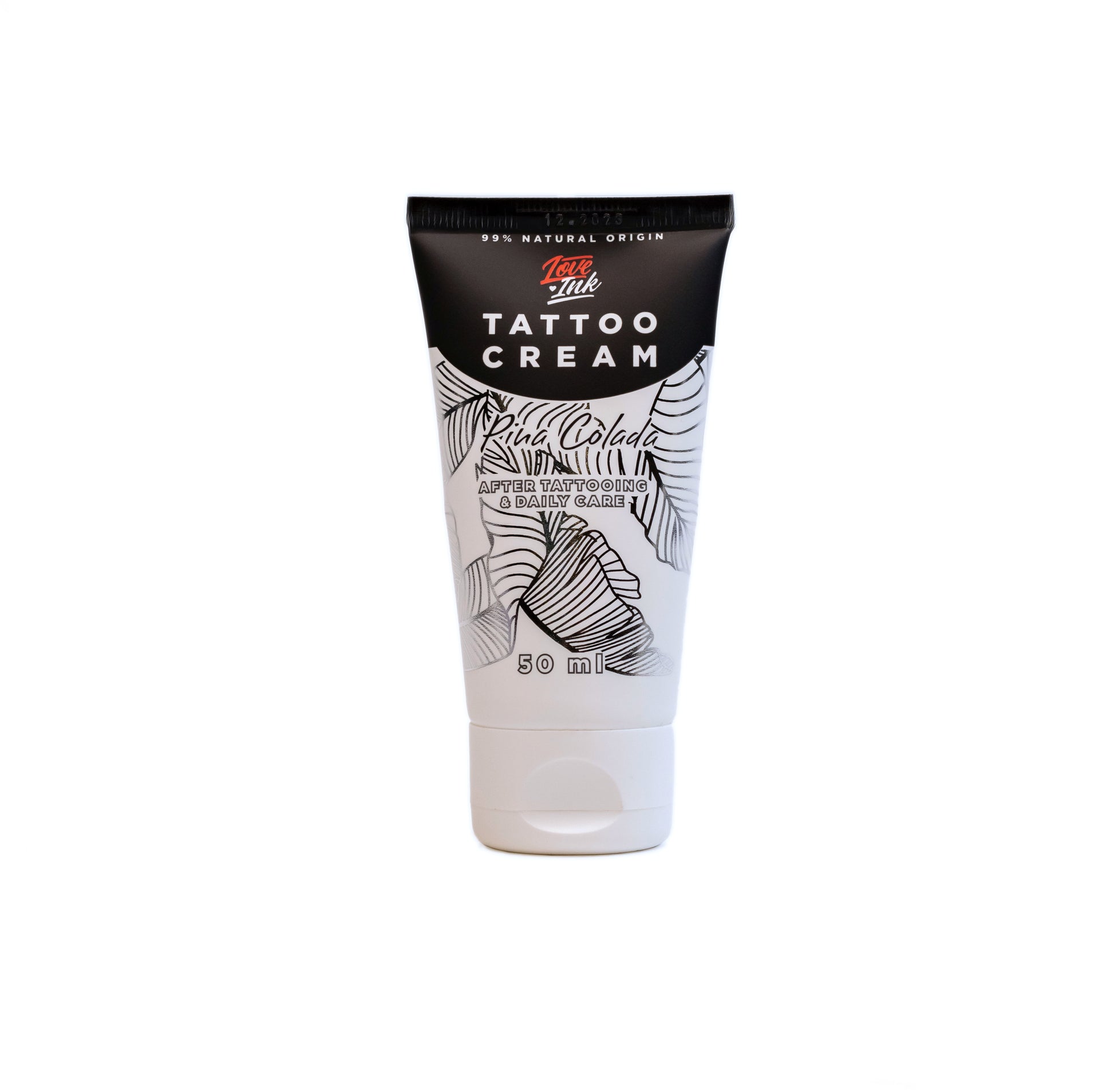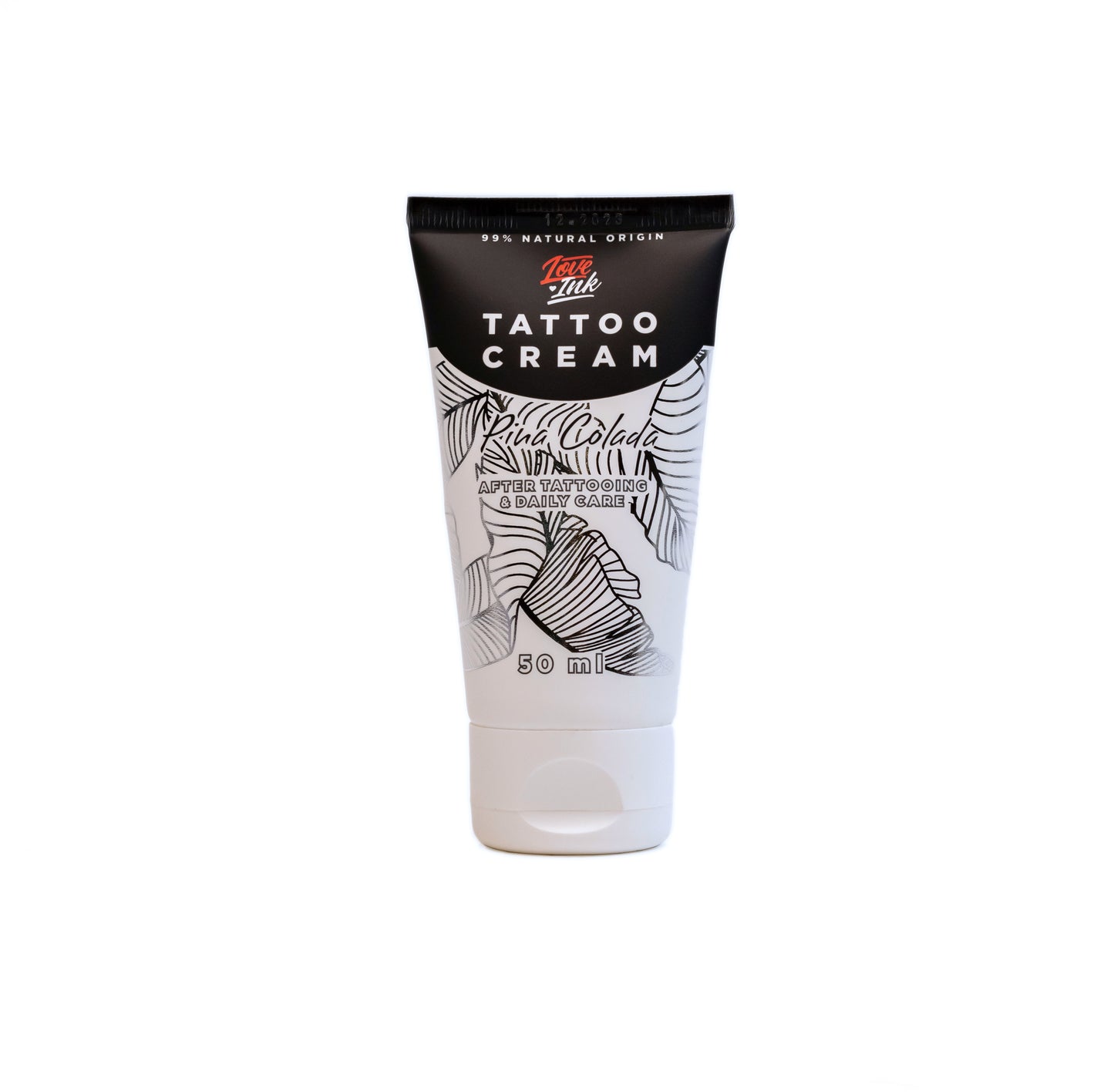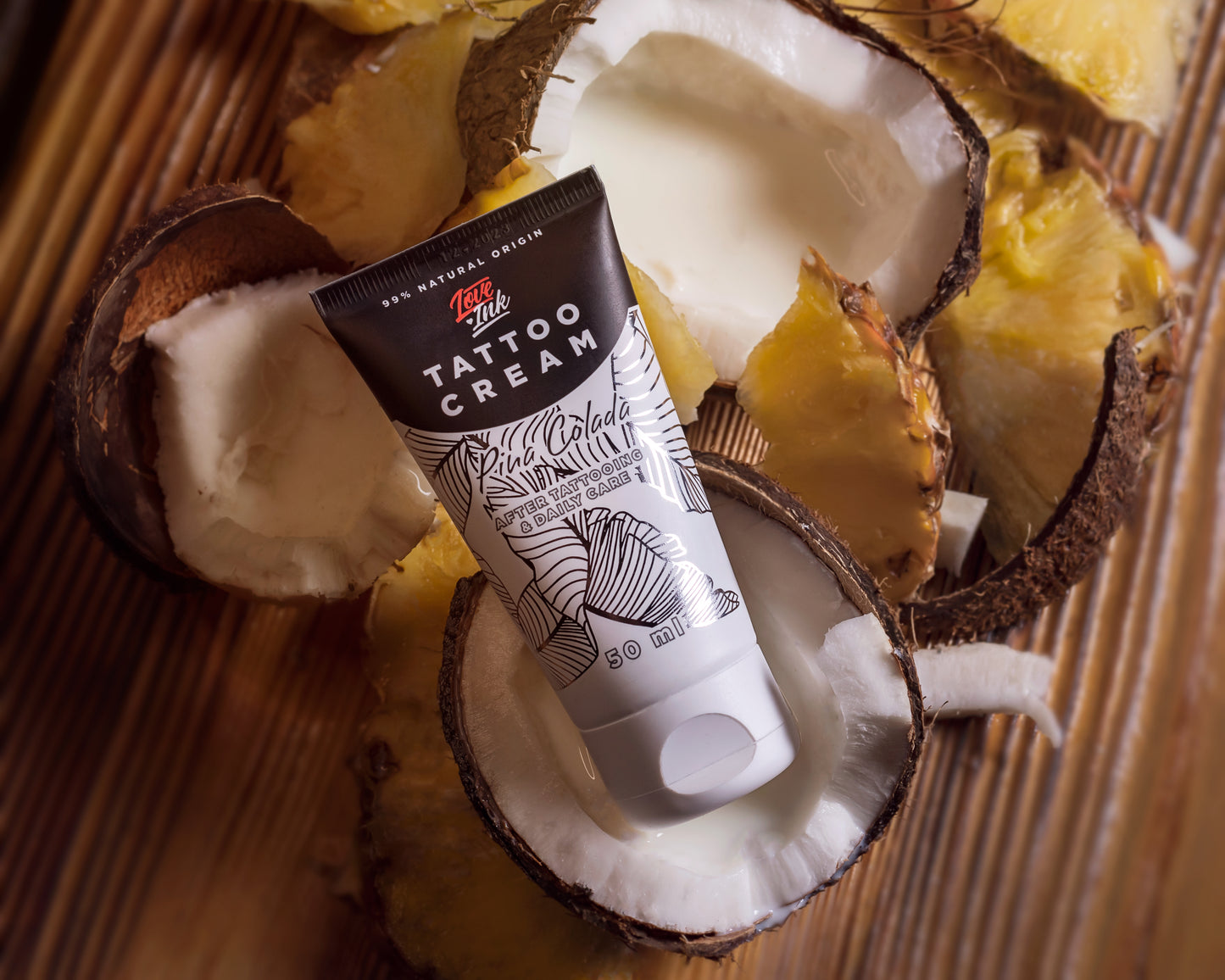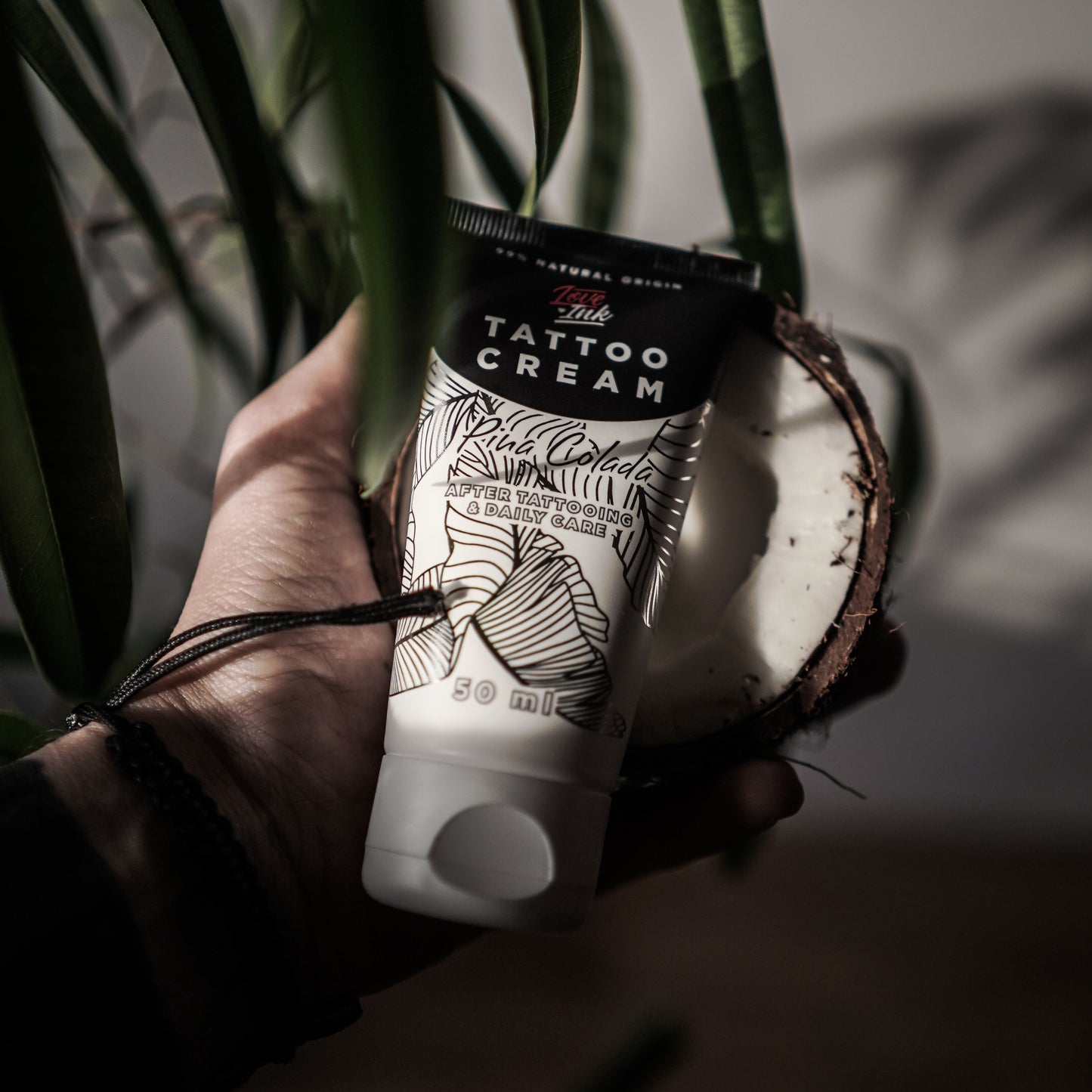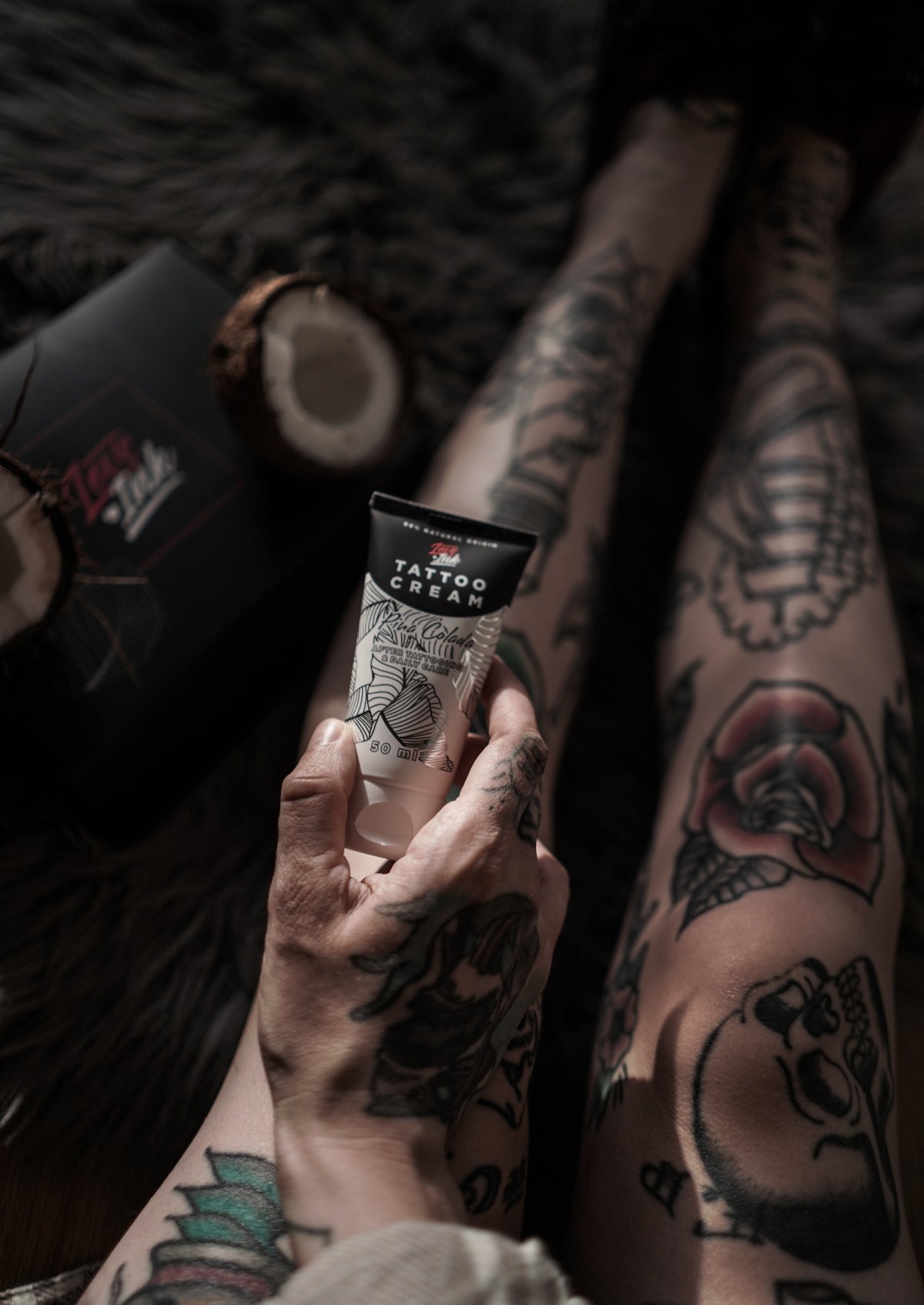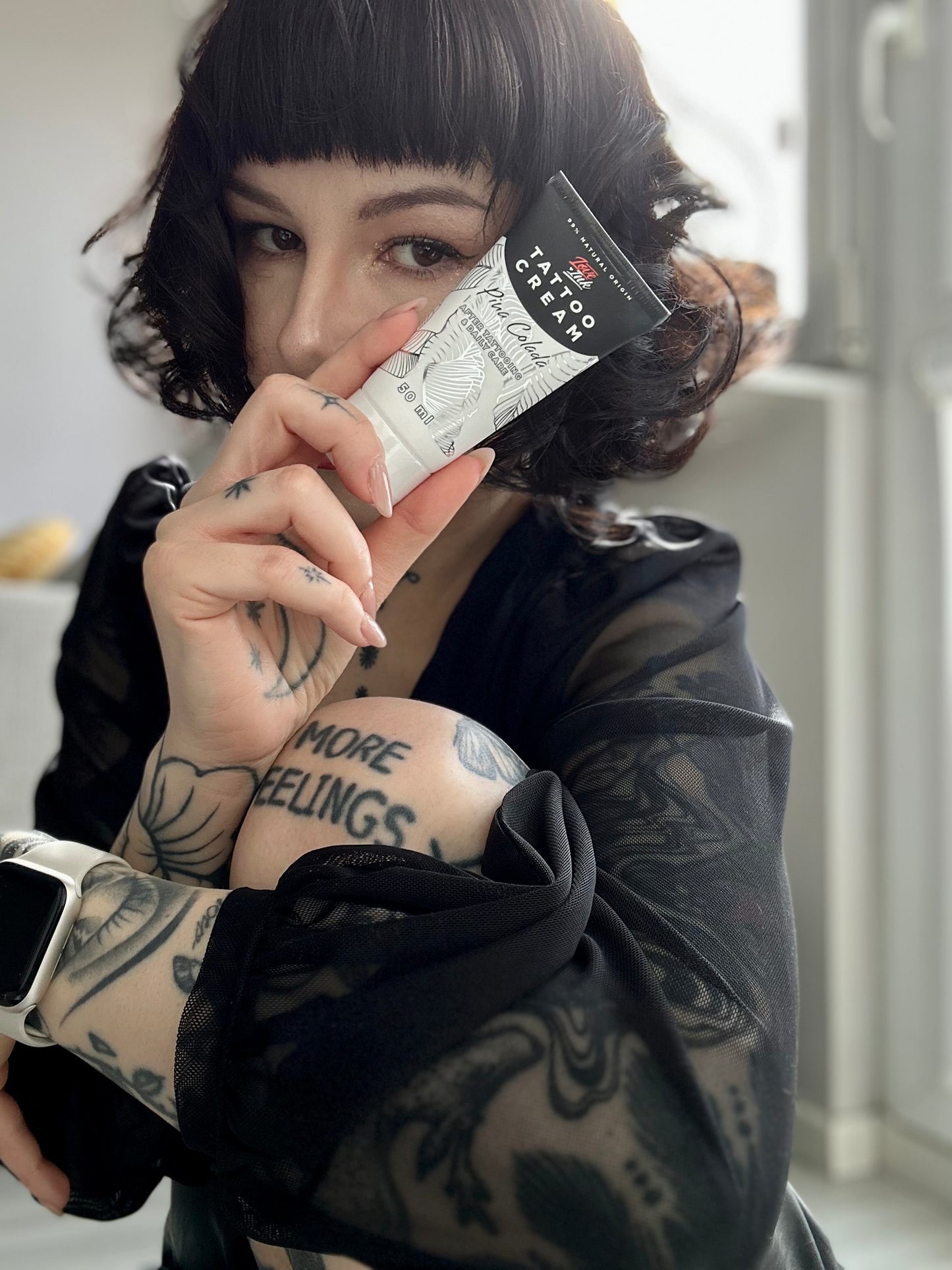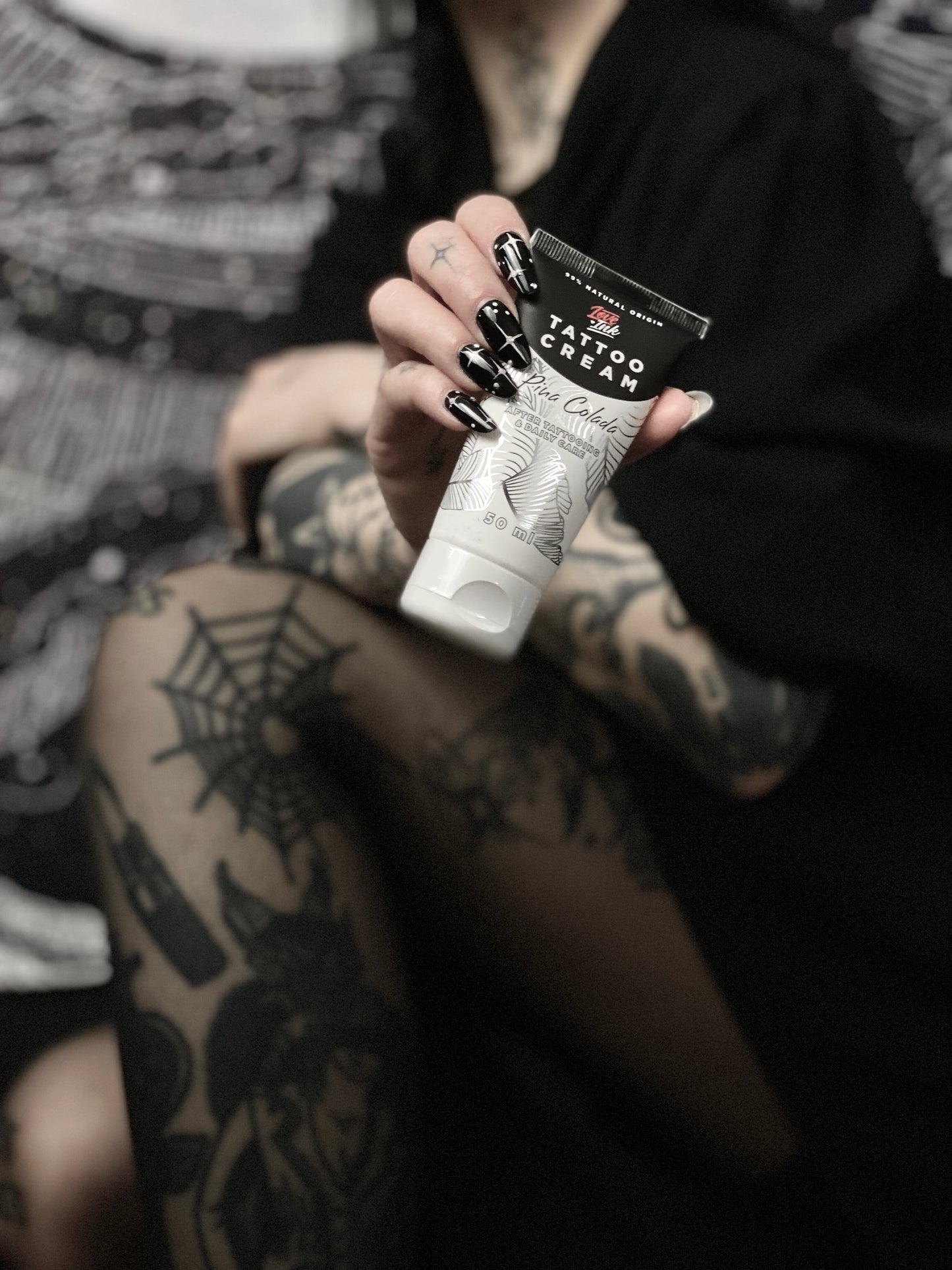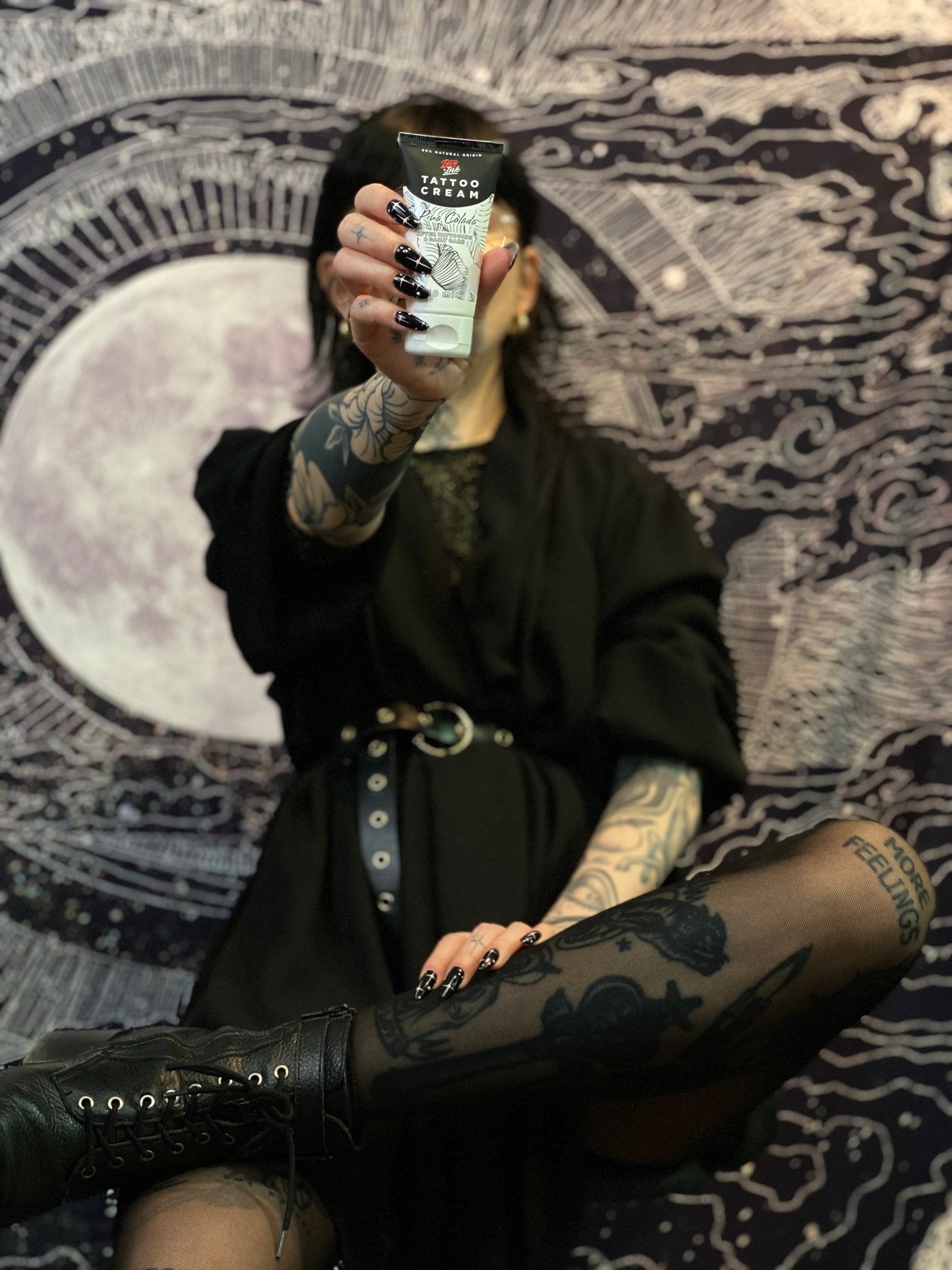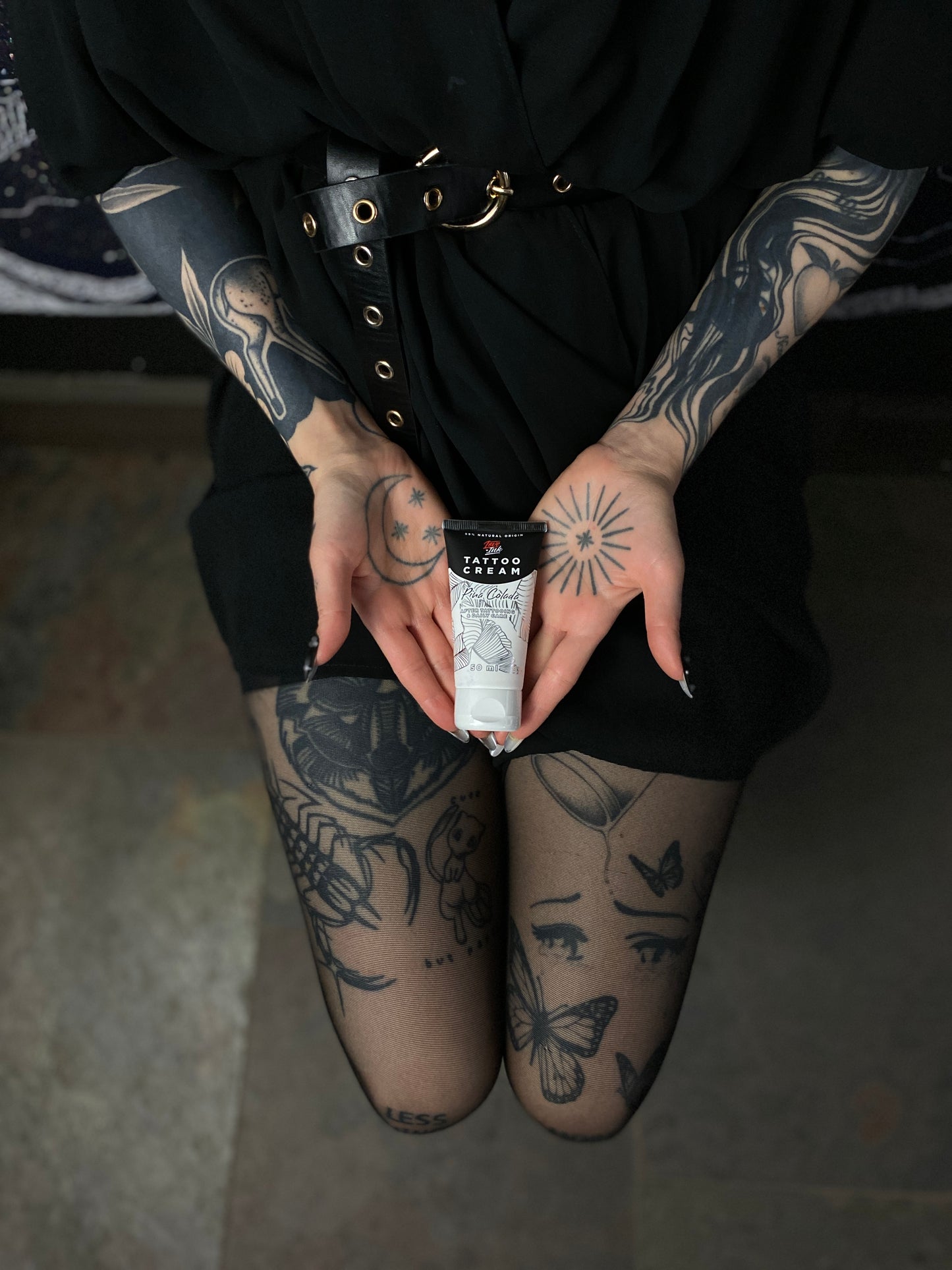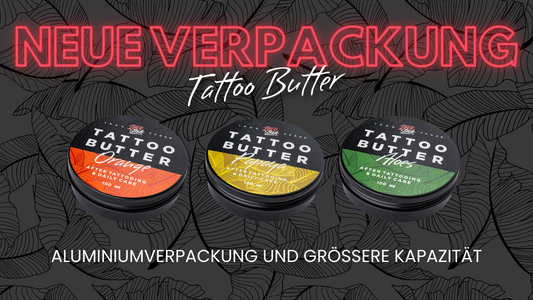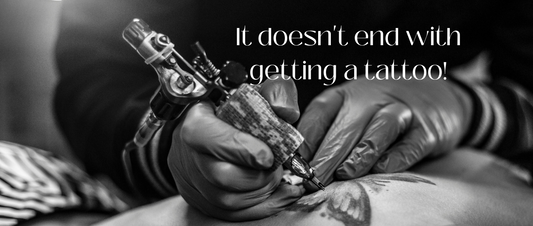There are actually a number of decisions to be made when choosing a tattoo design. What should be on it? Which area of the body do we want to be stabbed with needles? A rainbow palette of fairies and unicorns or the one and only black? Realism, surrealism or abstraction? And, perhaps most importantly, whether the tattoo should cover the whole back or just a fragment of the shoulder. Tattooing is another area of life where size does matter. Check out the strengths and weaknesses of small and large tattoos - you might be surprised!
Minimalist tattooing - discreet and good for a start
Recent years have been the golden age of minimalistic tattoo. And it's not surprising - small tattoos have power! First of all, they are a great option to see if you even want a tattoo. It's best to opt for a small design in an invisible area. You'll check if it hurts, if it heals well and if you really like this kind of body decoration.
A mini-tattoo is also ideal for people who want self-expression but in a discreet form. If the tattoo is meant to have a symbolic meaning and you care more about your own feeling of it being on your skin than the opinion of others - this is the option for you.
In addition, you will fit more small tattoos on your skin. So instead of choosing just one design, you can cover your body with a variety of graphics, symbolising what is important to you.
Small tattoo - not much room for self-expression
And what is the main disadvantage of a small tattoo? First of all, precisely the fact that it is small. You have to look at it really closely to fully appreciate it. It doesn't have as much room for detail or as extensive options for using colour or shading.
Also associated with this is the lower permanence of small piercings compared to large designs. In the case of a macro tattoo, we see the big picture - any spillage of the outline, fading or scarring, is unlikely to be visible. In the case of a smaller hole, the matter is completely different - even the slightest damage, scratch, adhesion or loss of pigment is immediately noticeable.
Big tattoo - more permanent and impressive
A larger tattoo is therefore more durable - for two reasons. Firstly: potential damage and imperfections are much less noticeable. This is an effect of scale - any scratches or chipping of paint would be much more visible on the Girl with a Pearl, which is about the size of A3, than on the Panorama of Racławice, which takes up the whole building. The second reason is the place where small and large designs are made. The minimalist ones often land on parts of the skin prone to abrasion and damage - such as the fingers of the hands or the abdomen. The larger ones, on the other hand, mainly cover the back, shoulders or calves - by design less exposed to the elements.
A large punch can accommodate more elements, details, colours, shading - and can therefore express the wearer more fully and completely.
XXL tattoo - lots of pain and less chance of successful cover
Of course, big holes aren't perfect (after all, nothing is - except maybe mum's dinner, especially when you're already on your own). A larger tattoo requires spending long hours in the chair, usually over several sessions. That's a lot of time, but also a lot of pain. The skin gets more and more tired and sensitive over time, so the end of the session can be one of, to put it lightly, an unpleasant experience.
If the artist doesn't do a good job, if over time you don't like the design any more or if you change your views and the tattoo is no longer consistent with them (e.g. if you decide that God is not the only one who can judge you or that your ex was not love forever), then making a cover on a bigger tattoo can be not only very expensive, but also quite complicated from the design point of view, and thus not always come out nicely.
Prices of small and large tattoos - how do they differ?
The argument of cost is very often raised. A small tattoo is good for those with less resources because it costs less. Is this true? Generally yes, but not entirely. If we are talking about minimalist tattoos made with the lineart technique and beat them with large-scale patterns, then indeed, it is a matter of a few dozens euros compared to a few hundreds.
But among small tattoos there are also gems of microrealism. These are real tiny masterpieces, characterised by a huge amount of detail and great attention to detail. Considering the experience required, the level of artistry, but also the amount of time needed - they are not necessarily cheaper than full-back tattoos.
Large or small tattoos - which do artists prefer?
Do tattoo artists themselves have their own types - do they prefer small or impressive tattoos? This of course depends on the individuality. It's worth bearing in mind that rarely is any artist a specialist in everything (and if they claim to be, it's more of a stitch or an inflated ego). Therefore, it is worth going to that tattoo artist who is more comfortable doing the kind of design we want.
There are also trends where both large and small holes are made (e.g. lineart, neotrad). In this situation, in fact, the artist can make a small pattern just as well as a large one. However, realism and microrealism are very different from tribal or neotrad and need the right man at the machine.
Tattoo and social issues - does a big one disturb you at work?
Will a small tattoo be easier for the boss, clients or family to swallow? It all depends on the boss, clients and family, but also the placement. You're unlikely to sit shirtless in the office every day, so a full-back tattoo won't be visible, unlike a tiny design placed on your face.
Fortunately, this is no longer the 1990s and fewer and fewer unpigmented people are shocked by the presence of tattooed brothers and sisters on the streets or in schools - so this argument is not particularly relevant.
So what is the main consideration when choosing a tattoo size? Consider what you like and what you can afford. If the two options are mutually exclusive, we have two options: to collect for the tattoo of our dreams or to choose a less grandiose design. You can consult an artist, but it's still always your skin, your money and your decision - make it an informed one.
